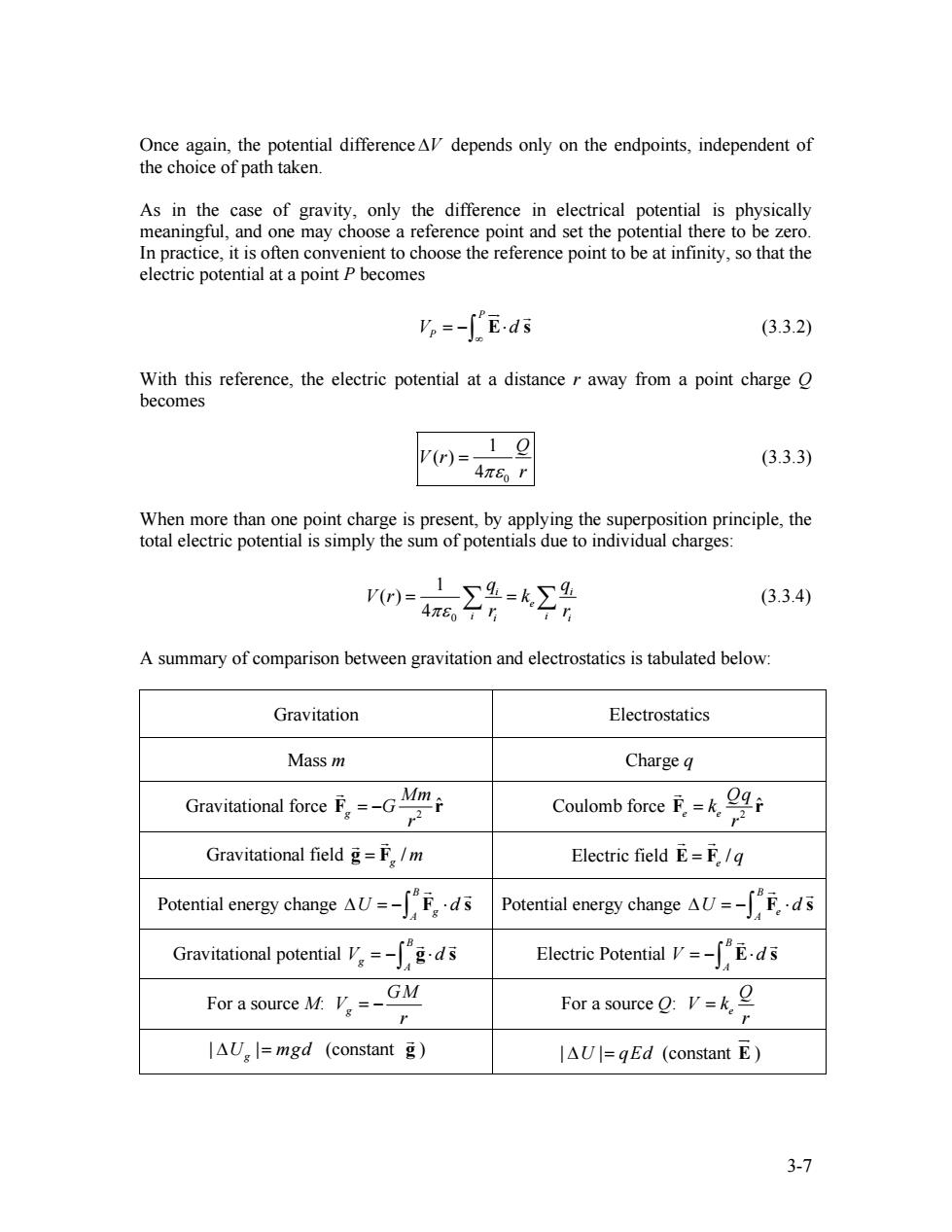正在加载图片...

Once again,the potential differenceAl depends only on the endpoints,independent of the choice of path taken. As in the case of gravity,only the difference in electrical potential is physically meaningful,and one may choose a reference point and set the potential there to be zero. In practice,it is often convenient to choose the reference point to be at infinity,so that the electric potential at a point P becomes V=-fE.ds (3.3.2) With this reference,the electric potential at a distance r away from a point charge becomes V(r)= (3.3.3) 4π80r When more than one point charge is present,by applying the superposition principle,the total electric potential is simply the sum of potentials due to individual charges: m号-号 (3.3.4) A summary of comparison between gravitation and electrostatics is tabulated below: Gravitation Electrostatics Mass m Charge q Gravitational for Coulomb force F Gravitational field=F/m Electric field E=F/ Potential energy changeFd Potential energy changeF Gravitational potential Electrie Potential VEd For a source M:VGM Fora soue Q: IAU I=mgd (constant g) |△Ul=gEd(constant E) 3-7Once again, the potential difference∆V depends only on the endpoints, independent of the choice of path taken. As in the case of gravity, only the difference in electrical potential is physically meaningful, and one may choose a reference point and set the potential there to be zero. In practice, it is often convenient to choose the reference point to be at infinity, so that the electric potential at a point P becomes P VP ∞ = − ⋅ d ∫ E s JG G (3.3.2) With this reference, the electric potential at a distance r away from a point charge Q becomes 0 1 ( ) 4 Q V r πε r = (3.3.3) When more than one point charge is present, by applying the superposition principle, the total electric potential is simply the sum of potentials due to individual charges: 0 1 ( ) 4 i i e i i i i q q V r k πε r r = = ∑ ∑ (3.3.4) A summary of comparison between gravitation and electrostatics is tabulated below: Gravitation Electrostatics Mass m Charge q Gravitational force 2 ˆ g Mm G r F r = − G Coulomb force 2 ˆ e e Qq k r F r = G Gravitational field / g F = g m G G Electric field / e E F = q G G Potential energy change B g A ∆ = U − ⋅ ∫ F s d G G Potential energy change B e A ∆ = U d − ⋅ ∫ F s G G Gravitational potential B g A V d = − ⋅ ∫ g s G G Electric Potential B A V d = − ⋅ ∫ E s G G For a source M: g GM V r = − For a source Q: e Q V k r = | | ∆ = Ug mgd (constant g G ) | | ∆U q = Ed (constant E ) JG 3-7